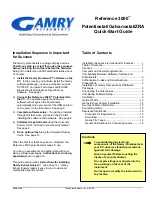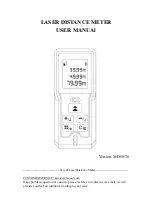
97
Appendix A
Syntax and Definitions
A.1
Definition of <string>
The IEEE 488.2 standard defines two types of string data. These strings are
either single or double quoted. For convenience, the 2835-C also recognizes
an unquoted string with certain restrictions as detailed below. Any of these
forms may be used where a <
string
> parameter is required.
1. <
string
>, using double quotes.
“this is a string”
2. <
string
>, using single quotes.
‘this is a string’
3. <
string
>, using no quotes.
thisisastring
A description of each type of <
string
> follows:
1. <
string
> defined using double quotes.
A double quote indicates that a string follows, and the string is termi-
nated by another double quote. A double quote may be embedded
within the string by using two double quotes together:
Example: “this string contains a “” double quote”
All characters within the two outer double quotes are considered part
of the string. It is an error if the string does not terminate with a double
quote. The string cannot contain the <CR>(ascii decimal 13), <LF>(ascii
decimal 10), or End or Identify characters.
2.
<string
> defined using single quotes.
This form is similar to double quoted string. A single quote indicates
that a string follows, and the string is terminated by another single
quote. A single quote may be embedded within the string by using two
single quotes together:
Example: ‘this string contains a ‘’ single quote’
All characters within the two outer single quotes are considered part of
the string. It is an error if the string does not terminate with a single
quote. The string cannot contain the <CR>(ascii decimal 13), <LF>(ascii
decimal 10), or End or Identify characters.
Artisan Technology Group - Quality Instrumentation ... Guaranteed | (888) 88-SOURCE | www.artisantg.com
















































